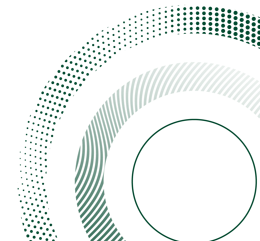
Prof. Tova Ganzel
CV
Prof. Tova Ganzel, Associate Professor in the Multidisciplinary Department of Jewish Studies at Bar-Ilan University, is Head of Olamot - The School of Jewish Studies and Israeli Culture and Coordinator of the Cramim Jewish Studies Honors Program. Her research focuses on the Hebrew Bible in the context of the ancient Near Eastern world, with particular attention to prophetic literature, ancient Near Eastern temples, and Second Temple texts. She also publishes on the Jewish reception of biblical criticism from the eighteenth century to the present, as well as on women serving as Halakhic professionals. Her books include Destruction and Restoration in the Seer’s Prophecy: Studies in the Prophecies of Ezekiel (published in Hebrew and English 2012,2020) and Ezekiel’s Visionary Temple in Babylonian Context (De Gruyter, 2021). In addition, she has co-edited two volumes: The Believer and the Modern Study of the Bible, edited by Tova Ganzel, Yehudah Brandes, and Chayuta Deutsch (2019) and Jewish Temples in Their Context edited by Tova Ganzel and Shalom Holtz (2020).
Research
- The Hebrew Bible in the context of the larger ancient Near Eastern world, the prophetic literature, ancient Near Eastern temples and second temple texts.
- Jewish reception of biblical criticism from the eighteenth century to the present.
- Women as Halakhic Professionals.
Courses
012349 (2025-2026) Ezekiel in Babylonian Context:
Explore the prophetic world of Ezekiel against the backdrop of Babylonian exile. Through close readings and comparative analysis, this course examines Ezekiel’s visions, symbolic acts, and the theological imagination that shaped his response to destruction and restoration. (taught in English)
Publications
BOOKS
- Tova Ganzel. Destruction and Restoration in the Seer’s Prophecy: Studies in the Prophecies of Ezekiel. Alon-Shvut: Tevunot-Herzog, 2012 [Hebrew].
Expanded version: Ezekiel: From Destruction to Restoration. Jerusalem: Maggid, 2020 [English].
- Tova Ganzel. Ezekiel’s Visionary Temple in Babylonian Context. BZAW 539. Berlin: De Gruyter, 2021. https://doi.org/10.1515/9783110740844
BOOKS EDITED
- The Believer and the Modern Study of the Bible, edited by Tova Ganzel, Yehudah Brandes, and Chayuta Deutsch. Boston: Academic Studies Press, 2019. Expanded, non-academic version: Jerusalem: Beit Morasha, 2015, 2016 (second edition) [Hebrew].
- Tova Ganzel and Shalom E. Holtz, eds. Contextualizing Jewish Temples: Opportunities and Challenges. Leiden: Brill Reference Library of Judaism, 2020. (232 pages) https://doi.org/10.1163/9789004444799
CHAPTERS IN COLLECTIONS
- Tova Ganzel, “The Transformation of Pentateuchal Descriptions of Idolatry.” In Transforming Visions: Transformations of Text, Tradition, and Theology in Ezekiel, edited by William A. Tooman and Michael A. Lyons, 33–49. Princeton Theological Monograph Series 127. Eugene, Oregon: Pickwick, 2009.
- Tova Ganzel, “‘He Who Restrains His Lips Is Wise’ (Proverbs 10:19): Is That Really True?,” Jewish Thought and Jewish Belief (= The Goldstein-Goren Library of Jewish Thought 15), edited by Daniel J. Lasker, 129–41. Beer Sheva: Ben Gurion University of the Negev, 2012 [Hebrew].
- Tova Ganzel, “God’s Name in Ezekiel,” Zer Rimonim: Studies in Biblical Literature and Jewish Exegesis Presented to Professor Rimon Kasher, edited by Michael Avioz, Elie Assis, and Yael Shemesh, 206–19. Atlanta: Society of Biblical Literature, 2013 [Hebrew].
- Tova Ganzel, “Ezekiel,” in The Jewish Study Bible, edited by Marc Brettler and Adele Berlin, 1033–1123. New York: Oxford University Press, 2014.
- Tova Ganzel, “Between the Prophet and His Prophecy.” In The Believer and the Modern Study of the Bible, edited by Tova Ganzel, Yehudah Brandes, and Chayuta Deutsch, 463–80. Boston: Academic Studies Press, 2019. An expanded version is found in the Hebrew edition: Jerusalem: Beit Morasha, 2015, 2016 (second edition), pp. 425–38.
- Tova Ganzel and Risa Levitt-Kohen, “Ezekielʼs Prophetic Message in Light of Leviticus 26.” In The Formation of the Pentateuch: Bridging the Academic Cultures of Europe, Israel, and North America, edited by Jan C. Gertz, Bernard M. Levinson, and Dalit Rom-Shiloni, 1069–78. Tubingen: Mohr Siebeck, 2016.
- Tova Ganzel, “The Reworking of Ezekiel’s Temple Vision in the Temple Scroll.” In Law, Literature, and Society in Legal Texts from Qumran: Papers from the Ninth Meeting of the International Organization of Qumran Studies, Leuven 2016, edited by Jutta Jokiranta and Molly Zahn, 230–452. Leiden: Brill, 2019.
- Tova Ganzel, “Priests, Levites, and the Nasi: New Roles in Ezekiel’s Future Temple.” In The Oxford Handbook of Ezekiel, edited by Corrine L. Carvalho, 2020. New York: Oxford, 2020. 10.1093/oxfordhb/9780190634513.013.8
- Tova Ganzel, “Ezekiel,” in HarperCollins Study Bible, 3rd edition (HCSB), edited by Nicole L. Tilford, SBL Press (accepted for publication). (Introduction: 11 pages, commentary: 30 pages).
- Tova Ganzel. “4Q385 (Pseudo-Ezekiel) in the Context of Ezekiel’s Restoration”, In The Pentateuch and Its Readers. 337-351. Mohr Siebeck, 2023.
PEER-REVIEWED ARTICLES IN BIBLICAL STUDIES
- Tova Ganzel, “The Purification of the People in Ezekiel: The Pentateuchal Background.” Beit Mikra 53 (2008): 47–58 [Hebrew]. https://www.jstor.org/stable/23510758
- “The Defilement and Desecration of the Temple in Ezekiel.” Biblica 89 (2008): 369–79. http://www.jstor.org/stable/42614841
- Tova Ganzel, “The Status of Functionaries in the Future Temple of Ezekiel.” Shnaton: An Annual for Biblical and Ancient Near Eastern Studies 19 (2009): 11–25 [Hebrew]. https://www.jstor.org/stable/23414235
- Tova Ganzel, “The Descriptions of the Restoration of Israel in Ezekiel.” Vetus Testamentum 60 (2010): 197–211. https://doi.org/10.1163/156853310X489098
- Tova Ganzel, “The Fast of Gedaliah: Its Continued Observance and Significance in the Restoration Period.” Shnaton: An Annual for Biblical and Ancient Near Eastern Studies 20 (2010): 51–69 [Hebrew]. https://www.jstor.org/stable/23412698
- Tova Ganzel, “The Prophecies of Joel: A Bridge between Ezekiel and Haggai.” Journal of Hebrew Scriptures 11 (2011): 1–22. Translated and published in Hungarian by Xaver Szabo in a volume of collection of studies on prophecy in the biblical world, 2017. DOI: 10.5508/jhs.2011.v11.a6
- Tova Ganzel, “Explicit and Implicit Polemics in Rabbi Samson Raphael Hirsch’s Torah Commentary.” HUCA 81 (2013): 171–91. http://www.jstor.org/stable/23509956
- Tova Ganzel, “Ezekiel’s Restoration Oracles: A Terminological Consideration.” Beit Mikra 58
(2013): 62–74 [Hebrew]. https://www.jstor.org/stable/23790478
- Tova Ganzel, “Ezekiel’s Temple in Babylonian Context.” Vetus Testamentum 64 (2014): 211–226. Co-author: Shalom E. Holtz. https://doi.org/10.1163/15685330-12341148
- Tova Ganzel, “Isaiah’s Critique of Shebna’s Trespass: A Reconsideration of Isa 22:15–25.” Journal for the Study of the Old Testament 39, no. 4 (2015): 469–87. https://doi.org/10.1177/0309089215590360
- Tova Ganzel, “A Note on the Meaning of Ḥamas in Ezekiel.” Scandinavian Journal of the Old Testament: An International Journal of Nordic Theology 29 (2015): 197–203. https://doi.org/10.1080/09018328.2015.1039826
- Tova Ganzel, “And the Name of the City from That Day On: ‘YHWH is There’ (Ezek. 48:35): A New Interpretation.” Vetus Testamentum 70 (2019):1-8. https://doi.org/10.1163/15685330-12341396
- Tova Ganzel, “The Rabbis Sought to Withdraw the Book of Ezekiel”: The Rabbinic Re-Authorization of the Book of Ezekiel.” Journal of Ancient Judaism 11 (2020): 1–20. https://doi:10.30965/21967954-12340009
- Tova Ganzel, “First-Month Rituals in Ezekiel’s Temple Vision: A Pentateuchal and Babylonian Comparison.” The Catholic Biblical Quarterly 83, no. 3 (2021): 390–406. https://doi.org/10.1353/cbq.2021.0081
- Tova Ganzel, “Ceremonial Celebrations Outside the Temple Compound in Ezra-Nehemiah in Babylonian Ritual Context.” Journal for the Study of the Old Testament (December 2021): 1–15. https://doi.org/10.1177/03090892211032266
- Tova Ganzel, “Ezekiel's Nonverbal Language as Prophetic Message. ” Zeitschrift für die Alttestamentliche Wissenschaft 134, no. 2 (2022): 179–92. https://doi.org/10.1515/zaw-2022-2002
- Tova Ganzel, “The Influence of Mendelssohn’s Commentary on Qohelet on Nineteenth-century Orthodox Jewish Commentators in Eastern and Western Europe.” Hebrew Union College Annual) 2022(: 207–225. DOI: 10.15650/hebruniocollannu.92.5
- Tova Ganzel and Elie Fisher. “A Glimpse of Rabbi David Zvi Hoffmann’s Methods as a Decisor of Halakhah” [Hebrew]. Jewish Studies Internet Journal) 2022(: 22. A https://jewish-faculty.biu.ac.il/files/jewish-faculty/shared/JSIJ22/ganzel_fischer.pdf
- Tova Ganzel and Elie Fisher. “Rabbi David Zvi Hoffmann’s position on Sesame Oil—A Diachronic Study in Light of New Sources.” Oqimta 9 (2023). [Hebrew]. http://www.oqimta.org.il/english/MainPage.aspx
- Tova Ganzel and Shalom E. Holtz. “Daniel 3 and 5 As Historiography.” Biblica 103/4 (2022): 525-535. DOI: 10.2143/BIB.103.4.3291466
- Tova Ganzel, “Ezra the Scribe-Priest against the Backdrop of Babylonian Temple Officials.” Journal of the Ancient Near Eastern Society 36 (2023): 1-14. https://janes.scholasticahq.com/article/75250-ezra-the-scribe-priest-against-the-backdrop-of-babylonian-temple-officials
- Tova Ganzel. “Sheshbazzar and Nehemiah: Local Administrative Authority During the Persian Period”, Vetus Testamentum (2023):1-16 https://doi.org/10.1163/15685330-bja10146
- Tova Ganzel. “Contextualizing Priestly Roles in the Formative Years of Jerusalem’s Second Temple.” Biblica, (2023) vol. 104, no. 2, pp. 179-194. https://doi.org/10.2143/BIB.104.2.3292023
- Tova Ganzel and Jan Safford. “The Sabbath in Judean Communities during the Mid-fifth Century BCE: Onomastic Evidence.” Journal of Ancient Judaism, (2025) vol. 16, No. 1. pp. 29-42. https://doi.org/10.30965/21967954-bja10067
- Tova Ganzel, “Office Holders in Jerusalem at the Beginning of the Second Temple Period,” in Mas’at le-Yoel: Studies in the Bible and Its Teaching in Honor of Rabbi Dr. Yoel Bin-Nun, ed. Yoav Barzilay, Jonatan Grossman, Yosef Ofer, and Jehoshua Reis, Megadim 63 (2025): 381–394. Alon Shevut: Herzog College Press – Tevunot. (Hebrew)
OTHER PUBLICATIONS
Encyclopedia Entries
- “Law in the Prophets.” In the Oxford Encyclopedia of Bible & Law (OEBL), editor in chief: Brent Strawn. Oxford University Press, 2015. Pp. 479–484.
- “Ezekiel.” In Routledge Dictionary of Ancient Mediterranean Religions (RDAMR), edited by Michael Satlow. Routledge, 2015. p. 332.
- “Ezekiel, Book of,” and “Joel.” In the Hebrew Encyclopedia (accepted for publication).
BOOK REVIEWS
- Stephen L. Cook, Ezekiel 38–48. The Anchor Bible 22B. New Haven: Yale University Press, 2018. In Review of Biblical Literature.
- John F. Evans, You Shall Know that I Am Yahweh: An Inner-Biblical Interpretation of Ezekiel’s Recognition Formula, BBRSup 25, University Park, PA: Eisenbrauns, 2019. In Review of Biblical Literature.
- Ronit Na’aman-Ir-Shai, “Woman” or “Eve”? Abortion in Orthodox Halakhic Discourse in the Twentieth Century from a Gender Perspective. Jerusalem: Magnes Press, 2022. In Kriot Yisra’eliot 5 (February 2024), “The Issue of Abortion in Rabbinic Literature from a Gender Perspective,” pp. 413–417. (Hebrew)
- Rosanne Liebermann, Exile Incorporated: The Body in the Book of Ezekiel. New York Oxford University Press, 2024. In The Journal of Theological Studies, 2025, https://doi.org/10.1093/jts/flaf071
HALAKHIC ARTICLES
- “‘Veset-Haguf’: A Halachic and Medical Approach.” Techumin 20, edited by Uri Dasberg et al., 363–75. Jerusalem, 2000. Co-author: Deena Zimmerman [Hebrew].
- “Halakhic Infertility.” Asia 85–86 (2009): 63–82. Co-author: Deena Zimmerman [Hebrew].
- “Ha-Posek, Ha-Rav, Ve-Ha-Yoetzet.” In Rabbis and Rabbinate: The Challenge, edited by Yededia Z. Stern and Shuki Friedman, 2:611–25. Jerusalem: The Israel Democracy Institute, 2011 [Hebrew].
- “Ethical Issues in the Use of Hormonal Intervention for Religious Concerns.” Nashim 21 (Spring 2011): 114–29. Co-author: Deena Zimmerman.https://doi.org/10.2979/nashim.21.114
- “Women as Halakhic Professionals: The Role of Yo’atzot Halakha.” Nashim 22 (Fall 2011): 162–71. Co-author: Deena Zimmerman. https://doi.org/10.2979/nashim.22.162
- “Continuing Research on Halakhic Infertility.” Asia 91–92 (2012): 53–65. Co-authors: Deena Zimmerman, Tirza Kelman [Hebrew].
- “Halakhic and Ethical Issues in the Use of Hormonal Intervention for Religious Concerns.” TZOHAR 39 (2016): 165–79. Co-author: Deena Zimmerman.
- “Chatzitza in long, polished and Gel/Acrylic fingernails.” Techumin 35, edited by Israel Rozen et al., 300–311. Jerusalem, 2015 [Hebrew].
- Tova Ganzel, “Family in Ruin: A Study of Halakhic Questions during and after the Holocaust”. In The Burning Question: The Holocaust and Its Memory in Jewish Religious-National Perspective, edited by Itamar Levin, Rishon LeZion: Miskal – Yedioth Ahronoth Books and Chemed Books, 2023, pp. 143–158. [Hebrew].
Last Updated Date : 18/12/2025



